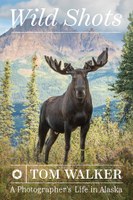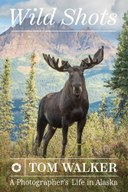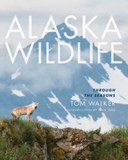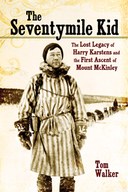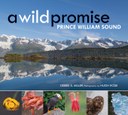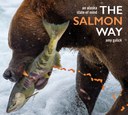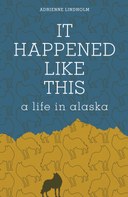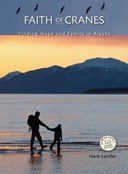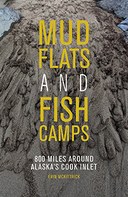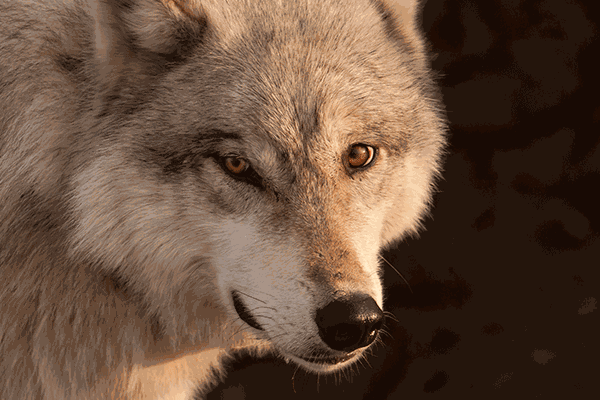
The following is an excerpt from Wild Shots: A Photographer's Life in Alaska by Tom Walker. Wild Shots is a memoir filled with stories of a life in the Alaskan bush and the colorful characters, animals, and adventures that have made it full and interesting.
Wolf Howls
Decades ago I hunted moose in the Brooks Range, and for years after, I went back to watch and attempt to photograph wolves in a remote valley there. On one trip my tent overlooked a broad tundra plain stretching to the snow-kissed high peaks. Geese, high and fast, called on the wind. Moose rumbled in the timber, and on a far slope grizzlies gorged on blueberries. Autumn in the Arctic, always a bittersweet season, lasts but a few short days with the lethal frost of winter close at hand. On that trip, nature painted these crisp autumn days with fiery brush strokes of crimson and gold.
Nights in camp brought great joy: stories around the fire and moose steaks roasted over the coals. Night winds carried the scent of wood smoke, fallen leaves, and sometimes the strong musk of a bull moose in rut. On one night my friends and I heard moose antlers crashing in the dark. The fire, pitched in front of our mountain tents, though hot, could not keep the chill at bay. It felt colder than the 20°F registered on the thermometer, and my companions turned in early.
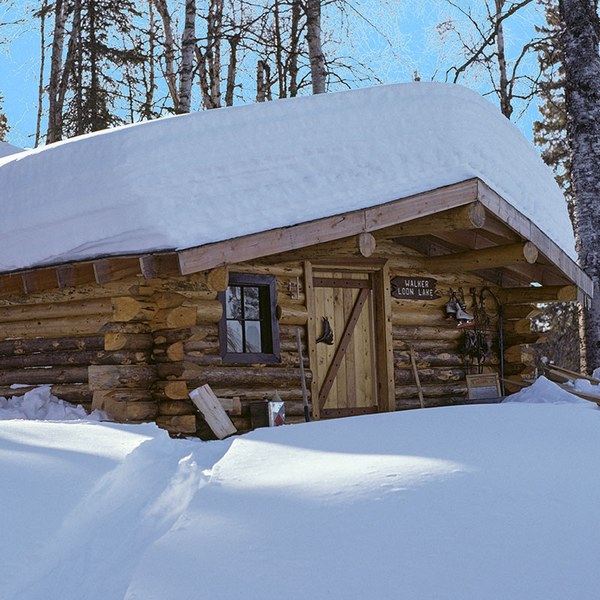
I sat alone in deep thought, staring into the flames. The wind had faded, but the cold came alive. A spruce round chucked into the coals sent a storm of sparks upward toward the stars. The ragged peaks to the north, lost earlier in the blackness, loomed against a wall of radiant green of the northern lights. In a few short minutes the green separated into three distinct bands; three immense waves flashed south, ghosting the ground in fevered light. Horizon to horizon, the sky writhed with patterns so intense, they seemed close enough to touch. At times the aurora masked the outlines of Orion and the Great Bear, the light fading here, then there, only to brighten with a rush and snap elsewhere.
How long the wolf had been howling before I heard it, I couldn’t say. Old sourdoughs speak of hearing the aurora. Perhaps at that moment the song seemed part of the ethereal light and I missed it. Only when the second and third wolves added their voices did the hair on my neck prickle. I came—wide-eyed—to my feet, peering north over the tall aspens, straining to see shapes coursing the muskeg, as four, five, perhaps six wolves conspired in the night. I dropped wood on the fire and stood rigid, watching, with wind-torn tears on my cheeks. The howling—long, deep notes blending, rising, fading—seemed to come ever closer. Was that my imagination? Or did the sound ebb and flow on the whim of the wind?
All at once the chorus stopped, leaving the night—the mother of fear and mystery—to the glow of fire in wood and sky. I held my breath, strained to hear, but silence persisted. When I looked up, the aurora had vanished, the stars again bright and crisp.
Later, shivering in my sleeping bag, I tried to sleep but lay awake to night sounds, my eyes open to the stars and cosmic light.
A few mornings later I sat on the rocky knoll behind camp, glassing the flats beyond the pond below camp. Just as the dawn light slanted full onto the tundra, flashes of white streaked from the timber. Two wolves sprinted into the sunlight as if pursued. Near the pond they slowed to a walk and came softly through the reeds, pausing side by side to drink.
I clearly recall that image. The glittering water, the tousled reeds, and the two wolves, tails and fur curling in the wind, all bathed in amber dawn light. The white wolf raised its head to sniff the air, silver water dripping from its muzzle. The wolves nuzzled each other before turning away to race back into the timber.

Sights like these charged that valley on the south side of the Brooks Range with a luminous energy. In that remote and otherwise undistinguished tributary, wolves denned, reared their young, and taught them to hunt. On almost any night there, you could hear their voices. Sometimes I’d see them, pups and adults alike, running the tundra or ghosting the woods. Just for the chance to watch, I searched for the den, but it remained elusive.
Numerous sightings confirmed that many wolves lived in the valley, sharing it with grizzlies that competed with them for the offal left by hunters. One crisp autumn morning, I climbed a bluff behind a mining camp to glass the remains of a moose shot for winter meat. Ravens and magpies darted over the distant gut pile hidden in the low willows. In dawn light I saw only squabbling birds, but later in the afternoon I spotted three wolves blitzing the kill site.
The wolves were in constant motion. In graceful leaps and sprints they seemed to taunt something hidden in the brush. In concert they would dart in, then leap away, dart in again. All at once they stopped and came together, peering into the brush. Then one wolf charged alone into the willows. A moment passed, and then the other two followed. A second later all three wolves raced back into view with a grizzly in full pursuit. One wolf, now limping, fell behind, but just as the bear closed in, the other wolves attacked it and rescued their pack mate. The fitful chase continued a short distance before a second bear charged into the open. This bear quickly caught up to the first, but instead of joining the attack, both bears stopped to watch the wolves sprint away.
During the brief chase, the wolves didn’t make actual contact with the bear that I could see but feinted in close enough to distract it. Even after the wolves had gone, the grizzlies stomped about, bluff charging the now vacant tundra. Once the dominance display lost its steam, the bears lumbered back to the spoils.
Over the years I usually saw wolves at a distance but sometimes at close quarters. Once, at a sharp turn in the trail, I surprised a wolf at close range. We both stopped and stared. The wolf paused briefly before slipping away into the willows. That was the way of most close contact. A brief look, then gone.
On that very trail, near the same spot, one of the miners who worked a nearby gold claim had a more memorable experience. He too came on a wolf that moved off into the brush. He walked on. A few minutes later he looked back and was startled to see the wolf following him. If he hurried, the wolf hurried. If he slowed, the wolf slowed. A strong man more accustomed to the roar and rattle of machinery than the silent glide of a wolf, he later admitted to fear. “I didn’t know what the damn thing was going to do.” The situation twisted wildly out of control when, around another bend in the trail, the miner saw a grizzly walking toward him. “Good Lord.” Unarmed, he bolted for a nearby spruce tree. The snapping branches startled both wolf and bear. From fifteen feet up, he looked down to see the two animals peering up at him. When the grizzly charged toward the tree, the miner climbed until there was no more tree left to climb. Unseen by the bear, the wolf ran in the opposite direction. The grizzly muttered and paced below the tree until near dark, then wandered off, allowing the miner to descend. He said the walk back to camp in the dark aged him ten years.
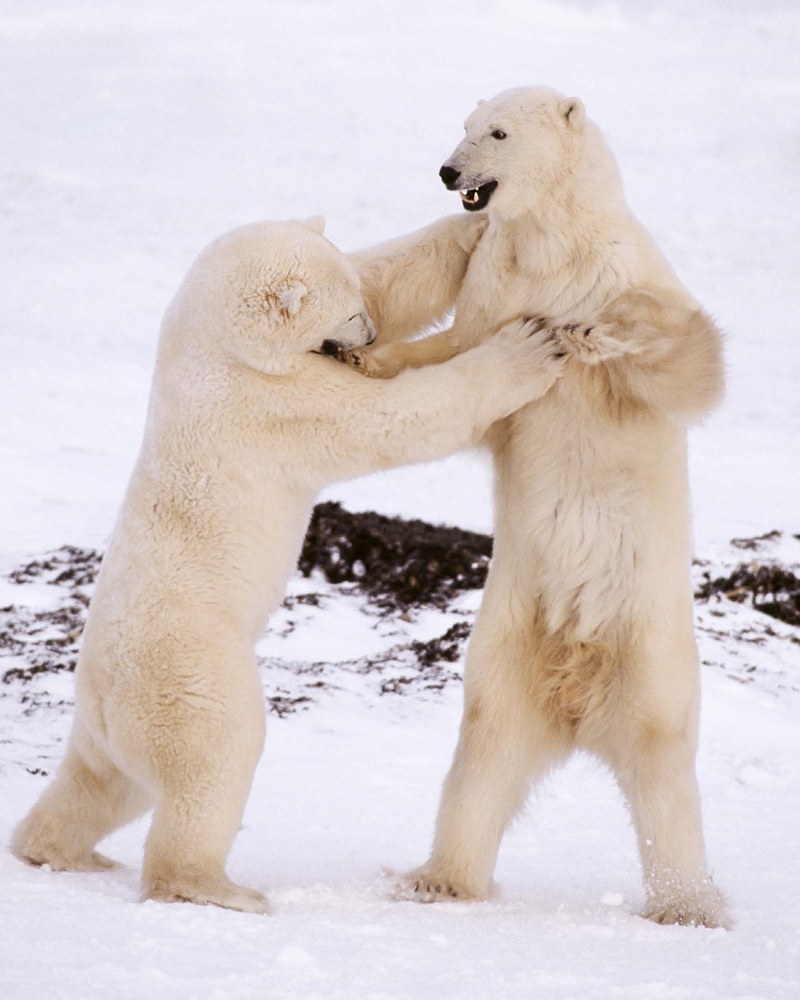
I never found a wolf den on that trip to the Brooks Range, but I chanced upon one later in the nearby Koyukuk River canyon. On that day thunder boomed, a hard wind blew, and an ominous wall of black clouds smothered the peaks. I’d been on a long journey to the North Slope, and the last thing I wanted was to be caught by a cloudburst. Unable to make my usual campsite before nightfall, I left my route and plunged downhill toward the river thickets that offered shelter for my small tent.
I hurried down a well-used trail etched along a sparsely forested ridge that bisected the muskeg. Absorbed in securing my footing, I failed to see the movement until I was nearly on it. A ball of fur ran across the trail and into a screen of alders. Grizzly cub! I slammed to a stop. No. A bushy tail. A cross fox. That’s no fox . . . it’s a wolf pup. I shrugged out of my backpack and broke through the alders to look out over the expanse of open muskeg, but the pup was gone.
I kept watch for a brief time and considered the possibilities. It was mid-June, and the pup was too small to be off on its own or trailing adults on a hunt. Perhaps the pup was lost or on a short ramble from a den hidden somewhere close by.
The buffeting wind ended my search. Intent on shelter I reclaimed my pack, and with thunder breaking right overhead, I hurried on into a thin copse of spruce. Piles of loam and large holes laced the ground beneath the trees. Wolf tracks, large and small, engraved the mounds littered with gnawed bones and tufts of fur. The smell of scat and urine perfumed the air, and mosquitoes droned above the dark burrows. I am standing on a den. Strange sensations of wonder, elation, intrusion, fear—a mix of emotions—pushed me away from there. With my feet almost on fire, I charged off toward the river.
Well into the open, I looked back. The den, sheltered by black spruce and willow, was sited at the end of the ridge where it overlooked the river. The timber provided cover from storms but also an unhampered view of the surroundings. Sensing movement behind me, I whirled in time to see four pups dash across the tundra and into the willows lining the river. One tumbled head over rump but was up in an instant, hardly missing a stride. The pups varied in color from gray to black and looked as wide as they were long. In moments they were gone into the very spot I had aimed for.
Just as I decided to turn back, an adult wolf emerged from the dense willows near the pups. Perhaps it had called to them, but I’d heard nothing over the wind. The wolf began barking, exactly like a dog defending home turf—a harsh relentless cadence, the anxiety unmistakable.
I backed slowly away, every fiber of my being on edge, wanting to get as far away from there as quickly as possible. The wolf dogged me as I hurried back the way I had come. It kept barking, once even howled—one short crisp call—which I hoped wasn’t a cry for help. Relief washed over me when the wolf finally turned back. I forged ahead into the rain.
Then the full fury of the storm broke: thunder, jabs of lightning, chilling wind, and torrential rain. An hour later, drenched and exhausted, I made camp in distant timber.
Read more of Tom's wildlife encounters in his new memoir Wild Shots: A Photographer's Life in Alaska.
 Mountaineers Books
Mountaineers Books
